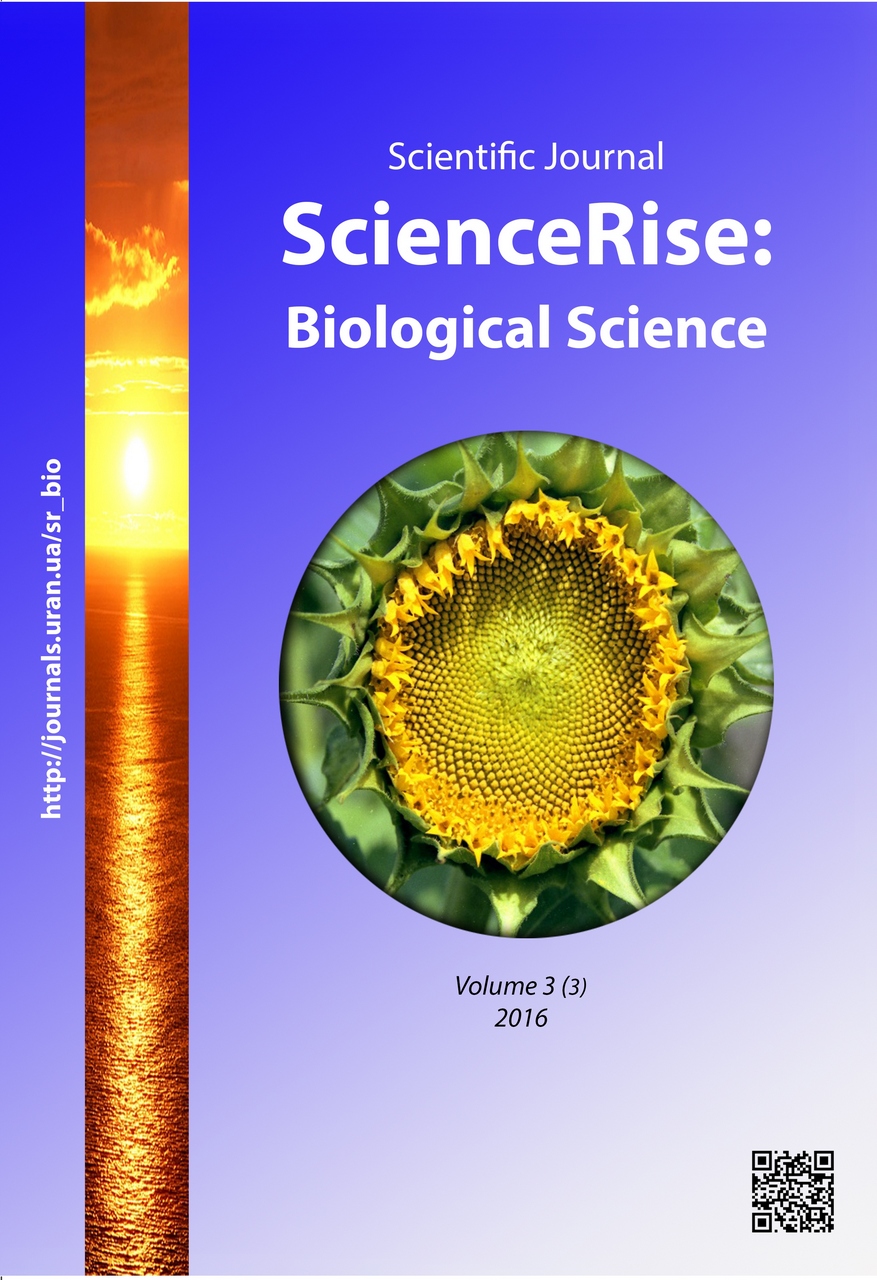Pathophysiology characteristics of the experimental model of obesity in female rats induced neonatal administration of monosodium glutamate
DOI:
https://doi.org/10.15587/2519-8025.2016.83570Keywords:
monosodium glutamate, obesity, rats, body mass index, glucose-tolerant testAbstract
It was shown that in rats of 4 months age, the injection of monosodium glutamate elicited visceral obesity. To confirm the symptoms of obesity with type 2 diabetes, we had a glucose-tolerant test. In animals with obesityб glucose levels in 2 hours after a glucose was 10,65±2,215mmol / L, that was noted glucose intolerance
References
- WHO fact sheet № 311. WHO. Available at: http://www.who.int/mediacentre/factsheets/fs311/en/
- Pasiyeshvili, L. M., Chotoshavina, T. F. (2014). Immune imbalance as a basis for progression steatohepatitis in patients with arterial hypertension and obesity. Ukrainian therapeutical journal, 2, 40–44.
- Manska, K. G. (2014). Clinical characteristic of primary obesity in young women. Problems of endocrine pathology, 2, 47–52.
- Poirier, P. (2006). Obesity and Cardiovascular Disease: Pathophysiology, Evaluation, and Effect of Weight Loss: An Update of the 1997 American Heart Association Scientific Statement on Obesity and Heart Disease From the Obesity Committee of the Council on Nutrition, Physical Activity, and Metabolism. Circulation, 113 (6), 898–918. doi: 10.1161/circulationaha.106.171016
- Falalieieva, T. M., Kukhars'kyi, V. M., Berehova, T. V. (2010). Effect of long-term monosodium glutamate administration on structure and functional state of the stomach and body weight in rats. Fiziol. Zh., 56 (4), 102–110.
- Insawang, T., Selmi, C., Cha’on, U., Pethlert, S., Yongvanit, P., Areejitranusorn, P. et. al. (2012). Monosodium glutamate (MSG) intake is associated with the prevalence of metabolic syndrome in a rural Thai population. Nutrition & Metabolism, 9 (1), 50. doi: 10.1186/1743-7075-9-50
- Castrogiovanni, D., Gaillard, R. C., Giovambattista, A., Spinedi, E. (2008). Neuroendocrine, Metabolic, and Immune Functions during the Acute Phase Response of Inflammatory Stress in Monosodium L-Glutamate-Damaged, Hyperadipose Male Rat. Neuroendocrinology, 88 (3), 227–234. doi: 10.1159/000124131
- Torii, K., Uneyama, H., Nakamura, E. (2013). Physiological roles of dietary glutamate signaling via gut–brain axis due to efficient digestion and absorption. Journal of Gastroenterology, 48 (4), 442–451. doi: 10.1007/s00535-013-0778-1
- Novelli, E. L. B., Diniz, Y. S., Galhardi, C. M., Ebaid, G. M. X., Rodrigues, H. G., Mani, F. et. al. (2007). Anthropometrical parameters and markers of obesity in rats. Laboratory Animals, 41 (1), 111–119. doi: 10.1258/002367707779399518
- Matysková, R., Maletínská, L., Maixnerová, J., Pirník, Z., Kiss, A., Zelezná, B. (2008). Comparison of the Obesity Phenotypes Related to Monosodium Glutamate Effect on Arcuate Nucleus and/or the High Fat Diet Feeding in C57BL/6 and NMRI Mice. Physiol. Res., 57 (5), 727–734.
- Savcheniuk, O. A., Virchenko, O. V., Falalyeyeva, T. M., Beregova, T. V., Babenko, L. P., Lazarenko, L. M. et. al. (2014). The efficacy of probiotics for monosodium glutamate-induced obesity: dietology concerns and opportunities for prevention. EPMA Journal, 5 (1), 2. doi: 10.1186/1878-5085-5-2
- Oida, K., Nakai, T., Hayashi, T. (1984). Plasma lipoproteins of monosodium glutamate-induced obese rats. International journal of obesity, 8 (5), 385–391.
- Stricker-Krongrad, A., Beck, B. (2004). Up-regulation of Neuropeptide Y Receptors in the Hypothalamus of Monosodium Glutamate-lesioned Sprague-Dawley Rats. Nutritional Neuroscience, 7 (4), 241–245. doi: 10.1080/10284150412331281040
- Kovacs, M., Kineman, R. D., Schally, A. V., Flerko, B. (2001). Increase in mRNA concentrations of pituitary receptors for growth hormone-releasing hormone and growth hormone secretagogues after neonatal monosodium glutamate treatment. Journal of Neuroendocrinology, 12 (4), 335–341. doi: 10.1046/j.1365-2826.2000.00458.x
Downloads
Published
How to Cite
Issue
Section
License
Copyright (c) 2016 Вікторія Василівна Конопельнюк, Ірина Юріївна Прибитько, Олена Іванівна Цирюк, Тетяна Михайлівна Фалалєєва

This work is licensed under a Creative Commons Attribution 4.0 International License.
Our journal abides by the Creative Commons CC BY copyright rights and permissions for open access journals.
Authors, who are published in this journal, agree to the following conditions:
1. The authors reserve the right to authorship of the work and pass the first publication right of this work to the journal under the terms of a Creative Commons CC BY, which allows others to freely distribute the published research with the obligatory reference to the authors of the original work and the first publication of the work in this journal.
2. The authors have the right to conclude separate supplement agreements that relate to non-exclusive work distribution in the form in which it has been published by the journal (for example, to upload the work to the online storage of the journal or publish it as part of a monograph), provided that the reference to the first publication of the work in this journal is included.









